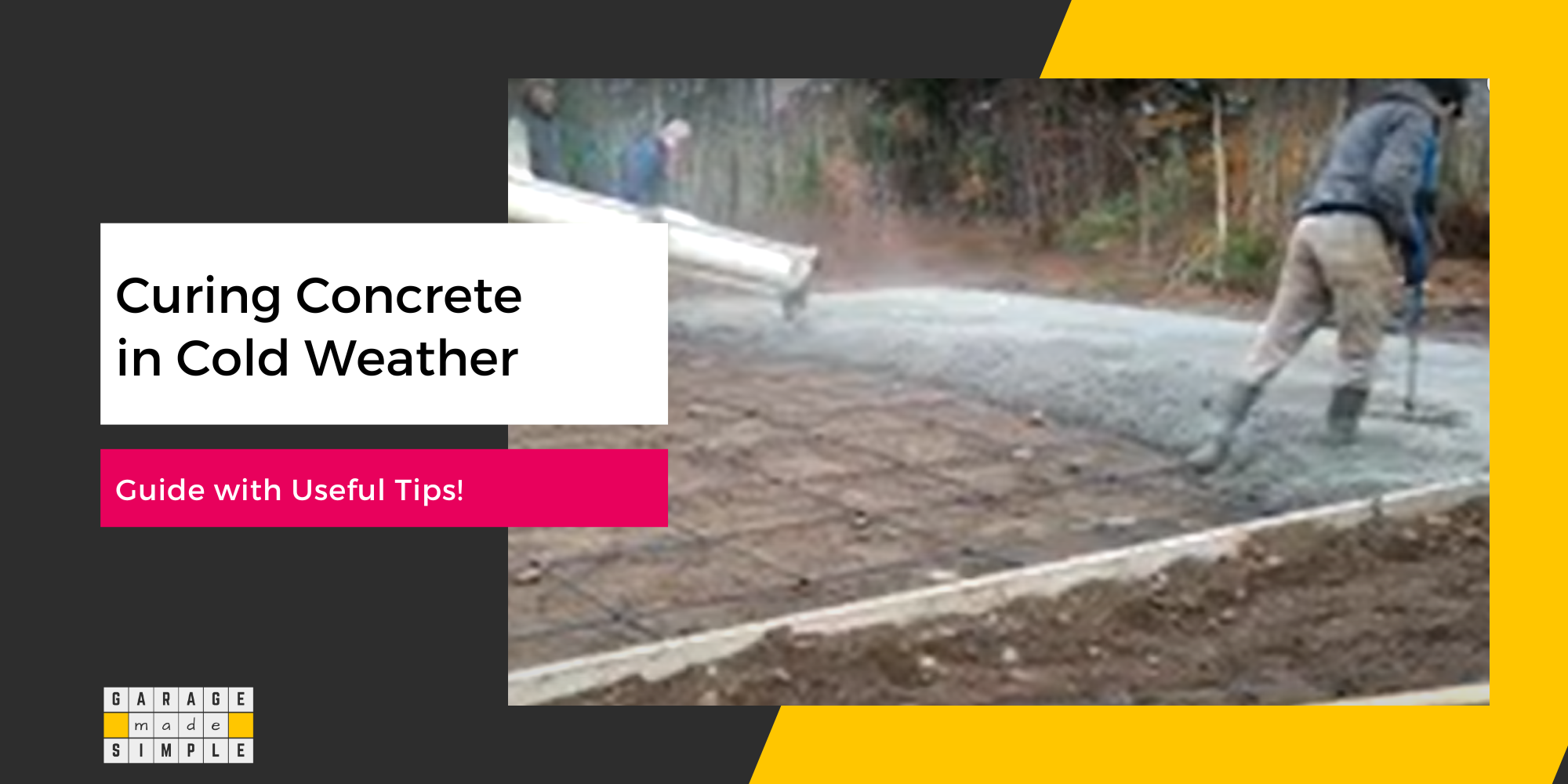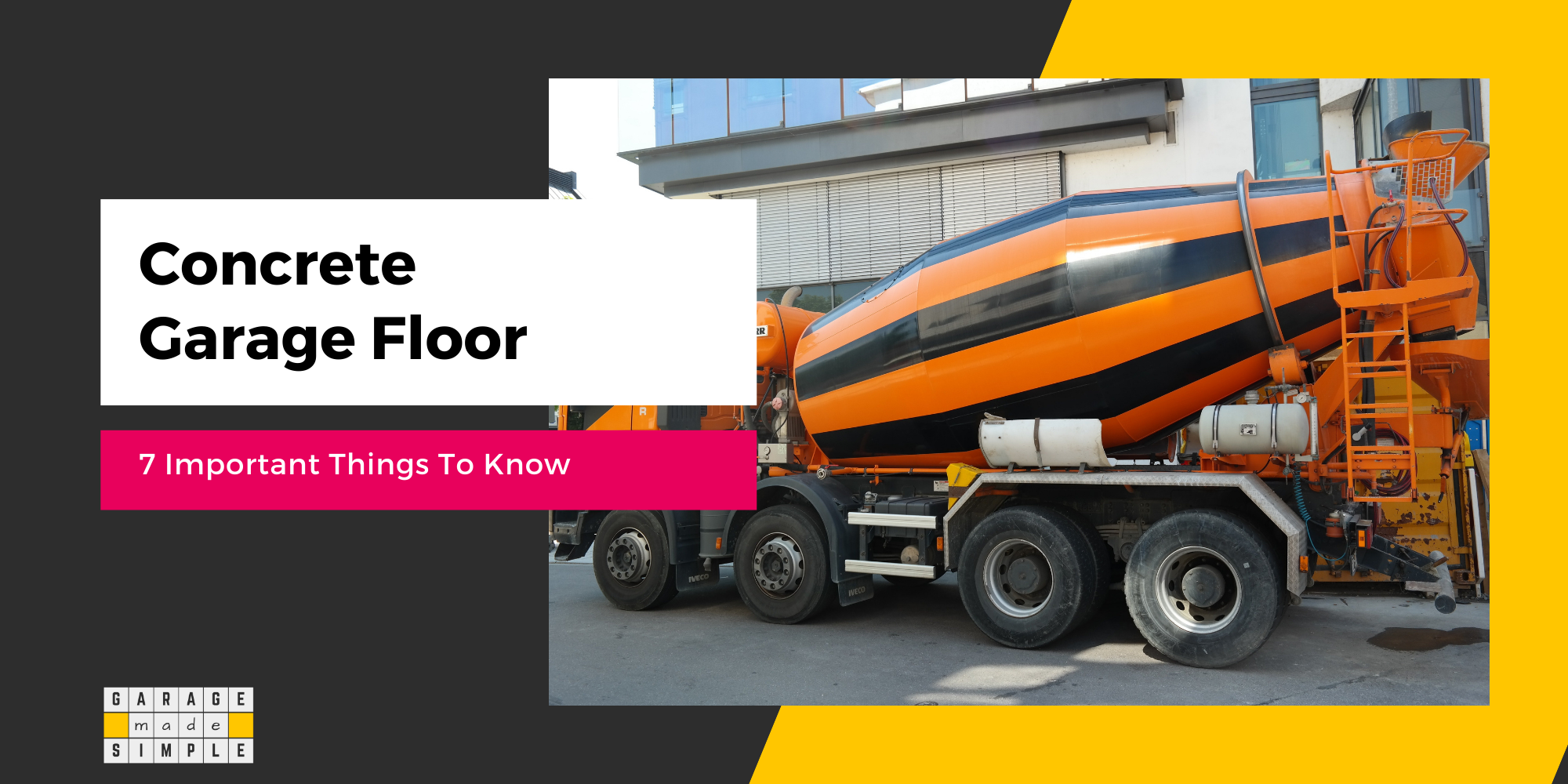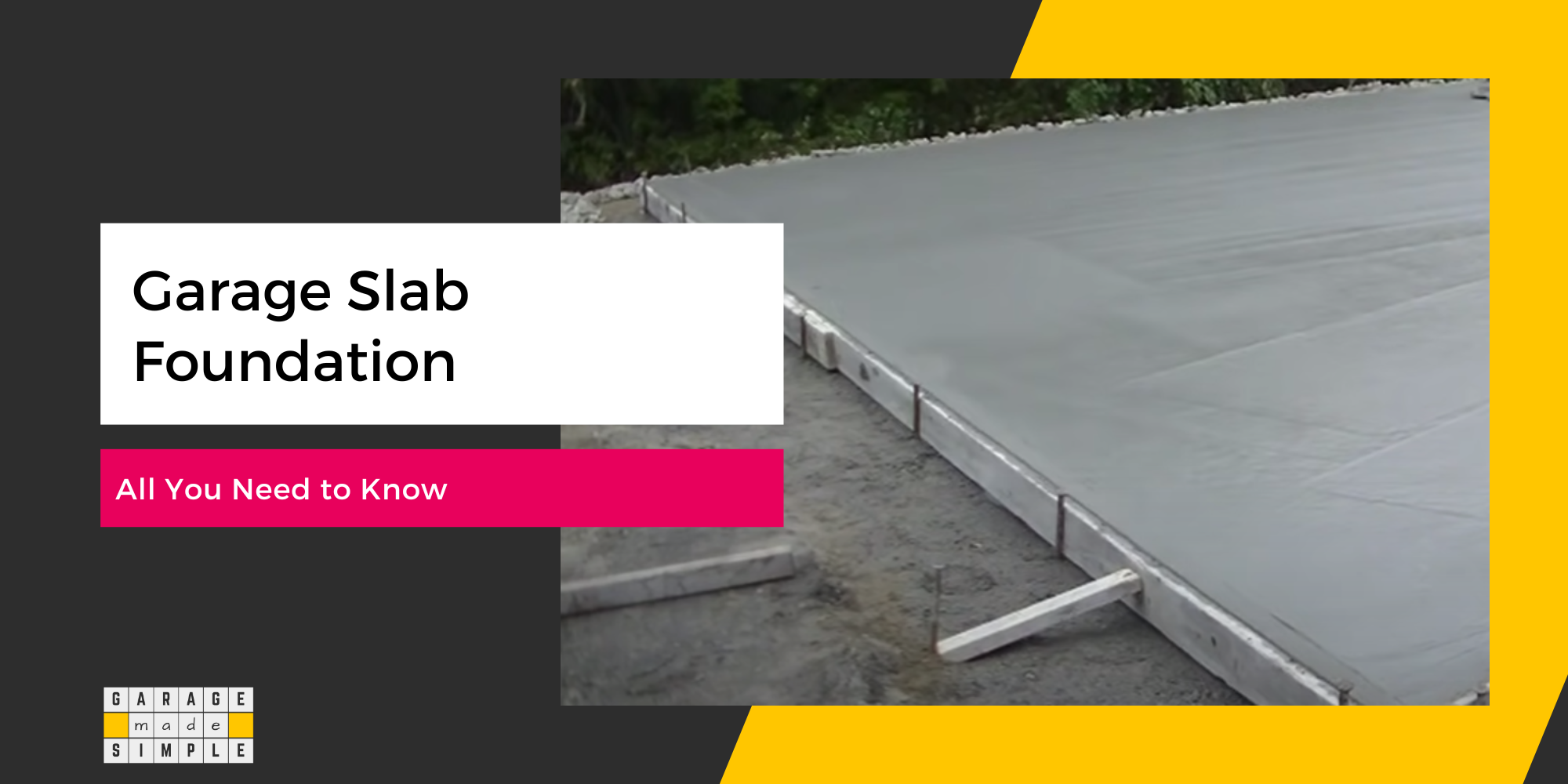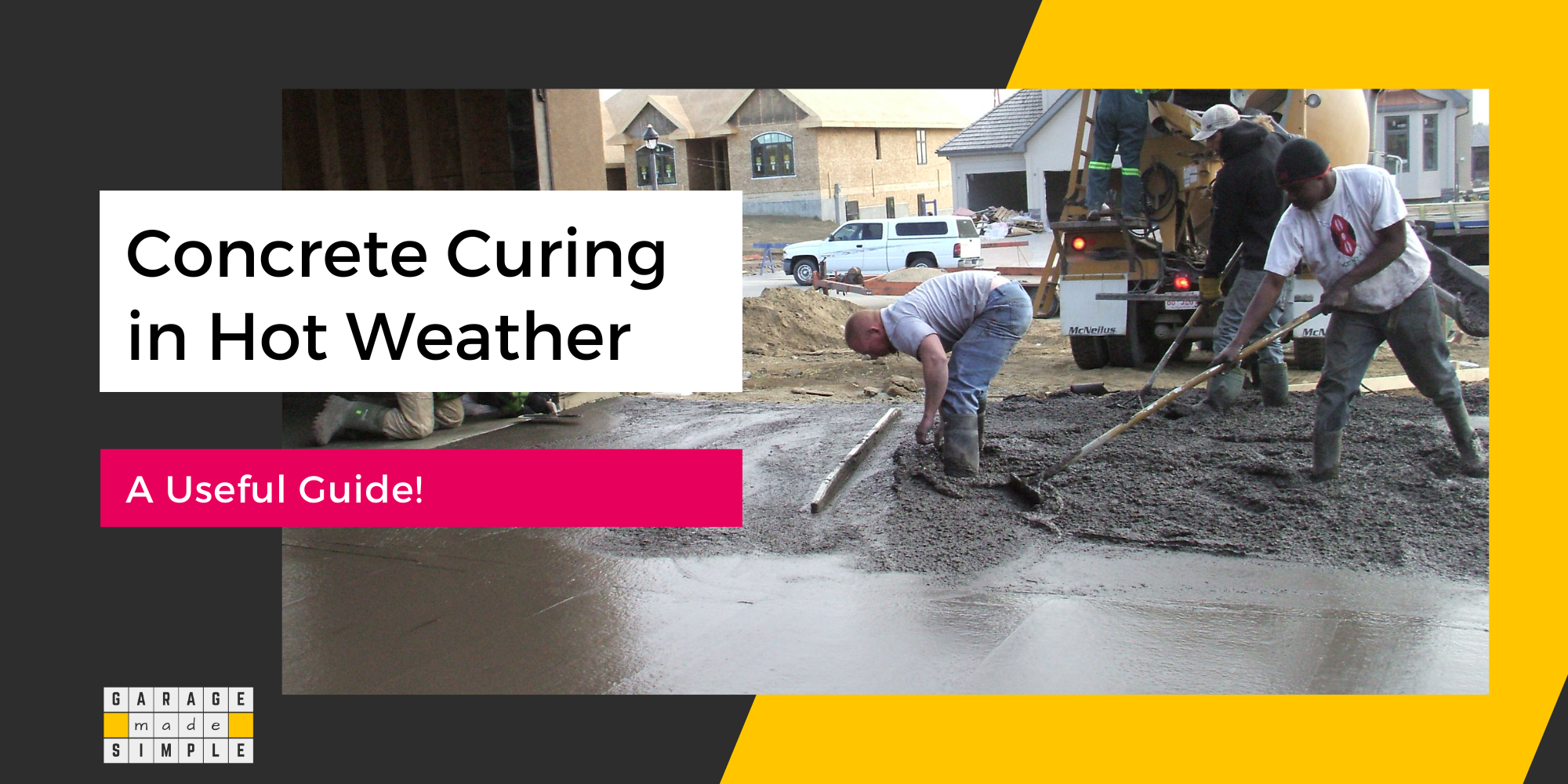Garage Built on Concrete Slab? (Important Stuff You Need to Know!)
garagemadesimple.com is a participant in the Amazon Services LLC Associates Program, an affiliate advertising program designed to provide a means for sites to earn advertising fees by advertising and linking to Amazon.com . The website is also an affiliate of a few other brands.
Can a Garage Be Built on Concrete Slab?
Are you planning to build a new garage on your lot? So where do you start? The detached garage has to be built from the ground up. So you have to start with creating the right base or foundation for your garage. Only then will your garage be stable & durable. So, can a garage be built on a concrete slab?
A detached garage can be, and more often than not, is built on a concrete slab also known as the “slab-on-grade”. The “slab-on-grade” is a type of foundation.
The foundation of an attached garage, on the other hand, must be integrated with the home foundation, such that there is no possibility of differential movement between them.
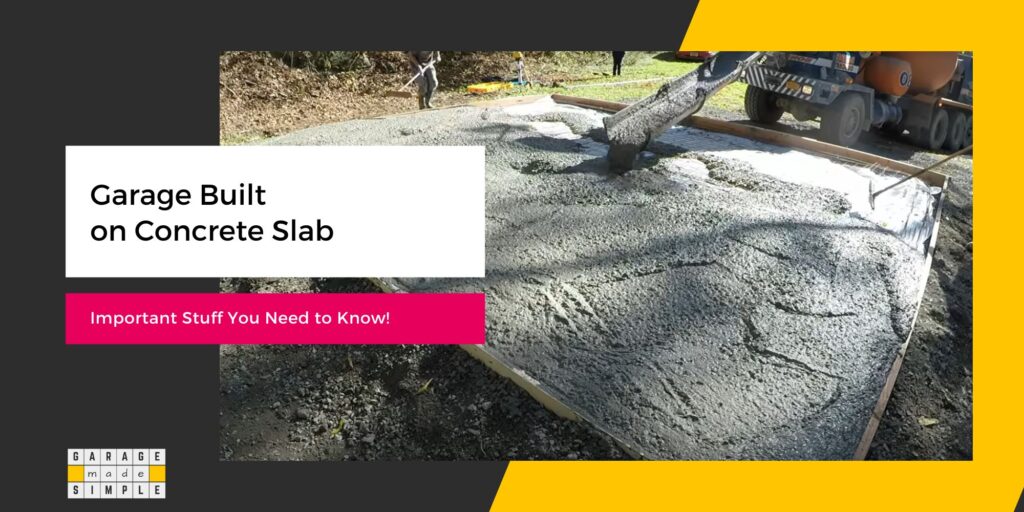
What Is the Purpose of a Foundation?
The purpose of any foundation, including garage foundations, is to transmit the entire building load to the ground, uniformly & safely, and minimizing any stress on the structural components due to soil movement or shifts in the load pattern.
A foundation also acts as a barrier to the upward migration of moisture from the grade to the garage floor and garage interior space.
It has been known for time immemorial that the strength, stability & durability of any civil structure such as dams & bridges, multi-storied buildings & simple garages, ultimately depends on the type, stability & strength of the foundation.
To ensure that your new garage is on a solid, stable foundation, you need to understand the role of foundations, the different types of foundations and the best foundation for your garage based on the local soil condition.
What Kind of Foundation Do I Need for a Garage?
In most terrains & soil conditions the garage can be built either on a Slab-on-Grade foundation (concrete slab) or on a T-Shaped foundation. In some special terrains & soil conditions a Pier & Beam foundation may become necessary.
Slab-On-Grade Foundation
Slab-on-grade foundation is a single concrete slab poured directly on to a compacted base of gravel and sand. Both the concrete slab and the compacted base should be at least 4” thick each, for a standard garage.
Slab-on-grade foundations are ideal where
- Ground does not freeze
- Ground is level & stable
- Loads are moderate
To accommodate higher loads the slab can be
- Poured thicker at the edges to form an integrated footing
- Thicker than 4”, say 6” or even 8” and reinforced with steel rebars
T-Shaped Foundation
T-shaped foundations get their name as their cross-section looks like the inverted letter T.
A detached garage may need to be built on a perimeter T-shaped foundation (aka Stem Wall foundation) where
- Ground freezes
- Ground is sloped
- Loads are high
Pier & Beam Foundations
Pier & Beam foundation is built by placing concrete footings deep in the ground. Vertical concrete or steel piers are then anchored to the footings. Horizontal concrete or steel beams span the piers to form a grid on which the garage can be built.
Pier & Beam foundations may become necessary where:
- The terrain has a steep slope, such as a hillside
- Flooding is a constant threat, such as coastal or marshy areas
- Soil has high clay content (swells when wet and shrinks when dry)
- Frost line is deep
What Is the Best Foundation for a Garage?
The type of foundation that is best in a given situation depends on whether the garage is attached or detached. Your decision will also depend on soil and climatic conditions as well as the garage size and load factor.
Attached Garages
The best foundation for an attached garage is typically the same foundation as the main house. This is because the garage and the house are sharing the same ground load, and it is important to have a continuous foundation to prevent differential settlement.
If the main house has a concrete slab foundation, then the garage should also have a concrete slab foundation. If the main house has a pier and beam foundation, then the garage should also have a pier and beam foundation.
Detached Garages
The best foundation for a detached garage depends on several factors, including the size and weight of the garage, the soil conditions, and the climate.
For a small, lightweight garage on well-drained soil in a mild climate, a gravel pad or concrete slab foundation may be sufficient. However, for larger, heavier garages, or garages on poor soil conditions or in cold climates, a more robust foundation, such as a pier and beam foundation, may be necessary.
What Kind of Slab Do I Need for a Garage?
To ensure that your garage is built on a concrete slab that complies with code and follows the best practices, keep the following 7 points in mind:
- Properly compacted base: to create a solid foundation for the slab and prevents it from sinking or cracking.
- Use of vapor barrier: to prevent moisture from rising up into the slab and causing damage.
- Concrete compressive strength: This is a measure of the slab’s ability to withstand weight and pressure. The required compressive strength will vary depending on the climate and the intended use of the garage.
- Minimum slab thickness: A 4″ thick slab is sufficient for most garages, but a thicker slab may be needed for heavier vehicles or equipment.
- Reinforcement: Steel rebar or wire mesh can be added to the concrete to increase its strength and durability.
- Contraction and expansion joints: Contraction joints help control and contain cracking. Expansion joints give room to the slab to expand and contract, with changes in temperature, without undue stress.
- Finishing and curing: The concrete must be properly finished and cured to ensure a smooth, durable surface.
1. Properly Compacted Base
The American Concrete Institute defines “base” as a complete “soil support system” for the slab-on-grade foundation. It consists of 3 layers as under:
- Subgrade: compacted original (or improved) soil as it naturally exists
- Subbase: gravel on top of the subgrade. The gravel must be angular for interlocking. The bigger sized gravel goes at the bottom and the smaller sized stays on the top of the subbase
- Base: crushed stone and / or sand on top of the subbase and directly under the concrete slab
2. Use of Vapor Barrier
The local building code may or may not specify the installation of vapor barrier under the concrete slab. However, it is a good practice to install it. It does not cost much and will save you from a lot of future problems.
Vapor barrier is a material that prevents the movement of vapor or moisture from an area of concentration, such as the grade below the concrete slab, to the livable area. Moisture can cause damage to the construction, promote mold growth and become a health risk.
For maximum effectiveness, the vapor barrier should be in direct contact with the underside of the concrete slab.
3. Concrete Compressive Strength
Table R402.2 of 2021 International Residential Code requires “Minimum Specified Compressive Strength” for garage floor slabs as:
| Weathering Potential | Compressive Strength (PSI) |
| Negligible | 2500 |
| Moderate | 3000 |
| Severe | 3500 |
4. Minimum Slab Thickness
A garage should always be built on a concrete slab that has a minimum thickness of 4”. A 4” thick concrete slab has enough strength to support a standard garage.
However, a 6” – 8” thick concrete slab, reinforced with steel rebars, will ensure higher strength & durability. Higher thickness and reinforcement is necessary if
- Another floor is to be added above the garage
- The garage will house a workshop with heavy machinery
- Heavy vehicles, such as tractors or RV will be parked
5. Reinforcement
The concrete slab that has a thickness of 4” or less should not be reinforced with steel rebars. The thickness is not enough to make the rebars effective. Steel wire mesh or polymeric fibers can be used to reinforce the concrete slab instead.
Steel rebar reinforcement is certainly required when the concrete slab is 6” or thicker. Correct placement of the rebars within the concrete slab are very important to ensure the reinforcement is effective.
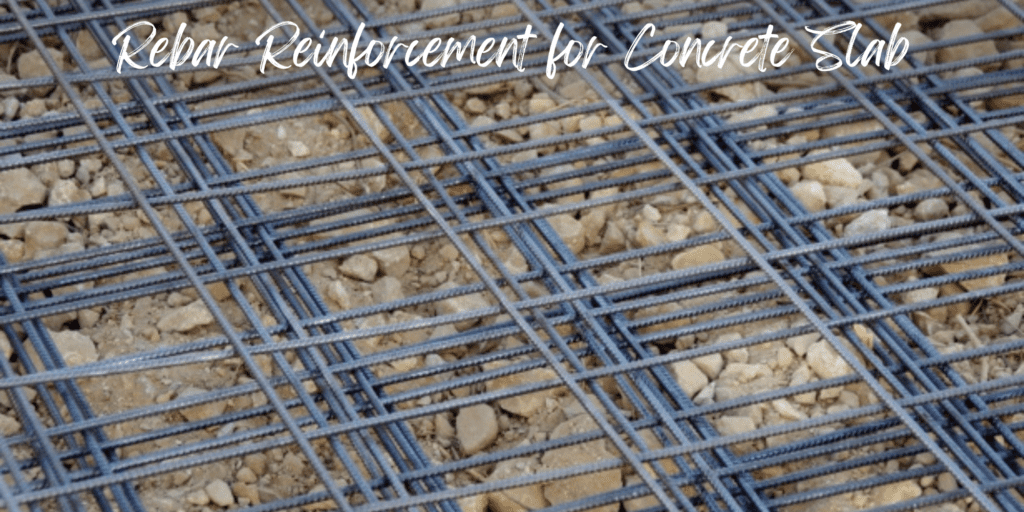
6. Contraction & Expansion Joints
Both contraction (aka control) and expansion (aka isolation) joints are generally required in a concrete slab. They allow space for the concrete slab to expand and move, when the temperature rises.
Contraction Joints are made into the concrete slab shortly after the slab has been poured. Contraction joints help to contain the shrinkage cracks.
Expansion Joints are created before the concrete is poured and separate (isolate) two concrete slabs or structures. Expansion joints reduce stress and cracking when concrete expands.
7. Finishing & Curing
After the concrete has been poured it has to be finished. Finishing settles the concrete mix so that the larger aggregates sink to the bottom and the finer cement floats to the top. The result is a smooth concrete slab surface.
The concrete slab is then left to cure. Water reacts with cement to form crystalline bonds that give strength to the concrete slab. The entire process takes 28 days. Make sure to seal the concrete slab after it has fully cured.
Thank you very much for reading the post. I do hope you found it informative and useful.

